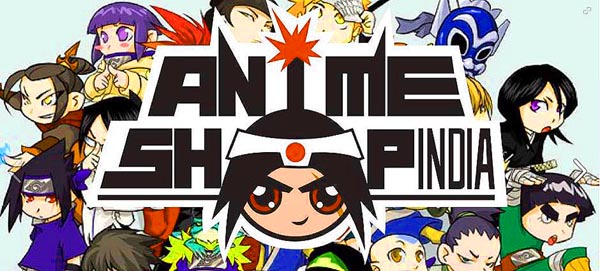Indian Paper-Based Interests Now Include Hand Drawn Anime

According to reports this week by
The Times of India and
INDIA Globe (New Delhi, India) in the U.S., U.K., and many other Western countries, there are different views and demands for paper.
Are we going back to the future with paper as well as pens? Remember... it was but several years ago the hottest smartphone technology came with a pen-like stylus. For the most part, that has been dropped. Quickly forgotten. A technology and medium unlike paper that was a mere blip on the radar of usefulness in a global society.
But some materials and artistic mediums transcend time as well as their use in any given era. Is the future for young Indians crafted by the passed down ancient paper and ink arts of Japan? In India we now see signs that young adults are discovering personal talents inspired by the timeless art style and embracing the hand-drawn paper anime phenomenon like in other countries, especially in the U.S., where anime cartoons, dramatic animation, and even some of the comics have become a distinctively foreign design cornerstone in most of our natural-born American childhoods for more than a decade.
From politics to gay rights (times are also changing for India's cultural dialog), charcoal on paper to clay models carefully filmed on an iPhone - animation shorts and films of all genres, mediums, and styles ware screened at an IndiEarth Animation film festival in the city. As usual, digital cloning of shapes and movements within the intricate artwork of anime is an ongoing challenge and only a few works went exclusively free of pen, and pencil, and paper was always there.
Moving beyond mythology and fantasy, which constitute mainstream hand drawn or "classic" animation films, the selection of 54 shorts and features from around the world will delve into contemporary subjects.
Films like Keli by Ranjitha Nagaland, exploring taboos of a girl pursuing a dance form like Theyyam, or Hemant Gaba's documentary Japan in Nagaland , about the influence of Japanese anime on the sub-culture of youth in Nagaland, which will be screened at the festival, are the rare current ventures that are defining contemporary animation films from the country.
"In terms of content, we are still not fully tapping into modern personal stories." Also lack of a stylized modern digital technology standards "prompts animators to ape the West," added Verma, pointing out how Japan has its characteristic Manga comics and Koreans their distinct lines to distinguish their work. "We are yet to develop a style of our own," said the animation artist who had to crowd-source his films. Based on a review of the success of this event, covered internationally starting this week, it will not be long before a domestic anime style develops unique, yet different and more "elf-like" Indian animated characters. the primarily hand drawn anime will be screened at the larger Taore Film Center due to the film's rapid rise in popularity.

Pictured Above: The logo for Anime Shop India, a relative start-up and the first in India that opened its doors in late 2014. Now the shop is expanding from a brick and mortar location to a popular e-commerce website and active social media presence following the country's most recent, most popular to date wide-spread introduction to the Japanese styled form of animation. As anime has shown to stay relatively consistent by composition as it's gone global, regardless of the market, it is almost always based on hand drawing and using paper products as a creative medium and foundation layer for nearly every film, comic, or web/television episode.
With no sponsors and only a niche audience so far, the film festival helps to provide exposure and bring together talent. "We are trying to encourage animation as art and film. There is a growing audience for this genre but not many consistent platforms are available," said Sonya Mazumdar of IndiEarth, which has partnered with Dolby India and Alliance Francaise for the third edition of the film annual film festival.
While most films will be screened at Alliance Francaise, the primarily hand drawn anime Japan in Nagaland will be screened at the larger Taore Film Center due to the film's rapid rise in popuarity. Alain Bidard's Battledream Chronicle on politics of modern technological colonization will be screened at the larger Tagore Film Center in classical theatrical format.
TAPPI
http://www.tappi.org/
 According to reports this week by The Times of India and INDIA Globe (New Delhi, India) in the U.S., U.K., and many other Western countries, there are different views and demands for paper.
According to reports this week by The Times of India and INDIA Globe (New Delhi, India) in the U.S., U.K., and many other Western countries, there are different views and demands for paper.  According to reports this week by The Times of India and INDIA Globe (New Delhi, India) in the U.S., U.K., and many other Western countries, there are different views and demands for paper.
According to reports this week by The Times of India and INDIA Globe (New Delhi, India) in the U.S., U.K., and many other Western countries, there are different views and demands for paper. 